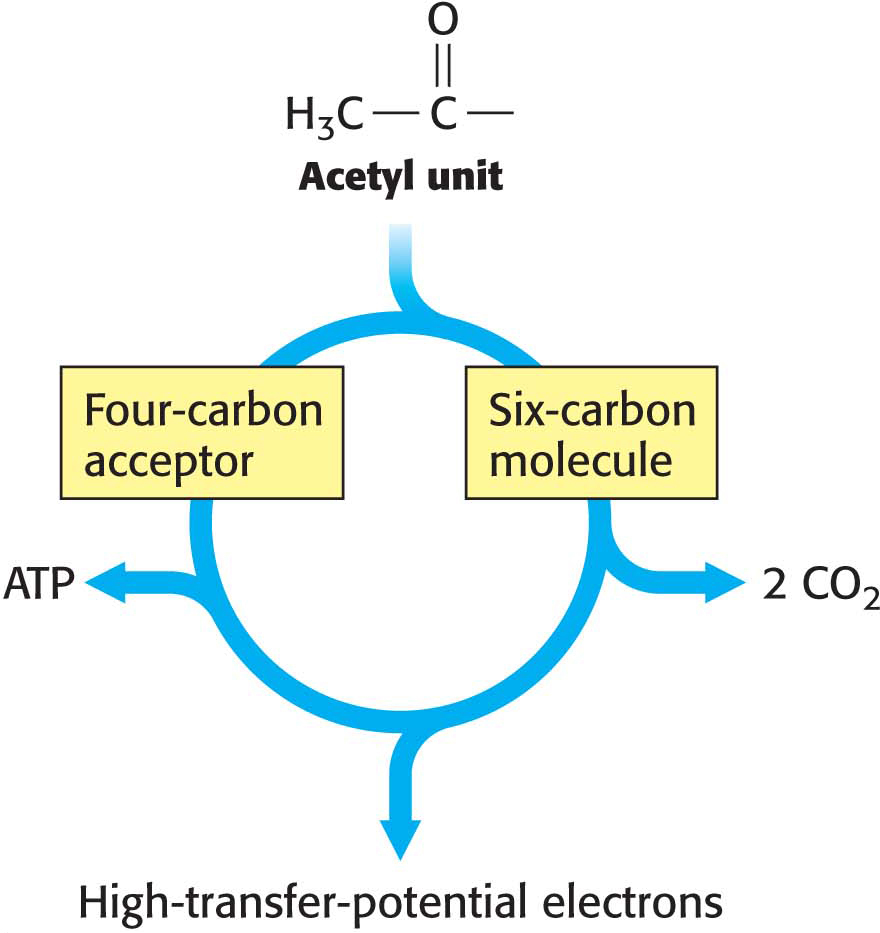
Preparation for the Cycle


As you learned in Chapter 16, the pyruvate produced by glycolysis can have many fates. In the absence of oxygen (anaerobic conditions), the pyruvate is converted into lactic acid or ethanol, depending on the organism. In the presence of oxygen (aerobic conditions), it is converted into a molecule, called acetyl coenzyme A (acetyl CoA; Figure 18.1), that is able to enter the citric acid cycle. The path that pyruvate takes depends on the energy needs of the cell and the oxygen availability. In most tissues, pyruvate is processed aerobically because oxygen is readily available. For instance, in resting human muscle, most pyruvate is processed aerobically by first being converted into acetyl CoA. However, in very active muscle, for instance, the thigh muscles of a sprinter, much of the pyruvate is processed to lactate because the oxygen supply cannot meet the oxygen demand.


A schematic portrayal of the citric acid cycle is shown in Figure 18.2. The citric acid cycle accepts two-
In this chapter, we examine the enzyme complex that catalyzes the formation of acetyl CoA from pyruvate, how this enzyme complex is regulated, and some pathologies that result if the function of the enzyme complex is impaired. However, the pyruvate dehydrogenase complex is not the only source of acetyl CoA. In particular, fatty acid degradation yields much acetyl CoA, as we will see in Chapter 27.